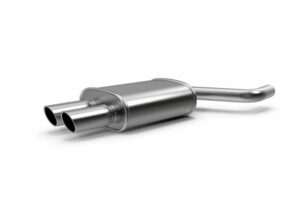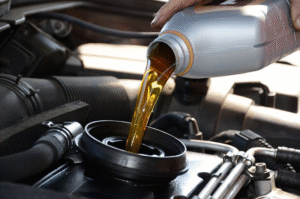When Should You Consider Tire Replacement?

Tire replacement is something every car owner needs to think about eventually. If you’ve been driving on the same tires for a long time, it’s important to know when they might need to be replaced. Old or worn tires can lead to unsafe driving conditions, causing accidents or damage to your vehicle. So, when is it time to replace your tires?
How to Know When You Need Tire Replacement
There are clear signs that it’s time for tire replacement. Here are five ways to know if you should get new tires:
- Check the Tread Depth
Tires have something called “tread,” which is the part that touches the road. As you drive, this tread wears down. A good rule to remember is the “penny test.” Place a penny into the tread with Lincoln’s head upside down. If you can see the top of his head, your tires are too worn and need to be replaced.
- Look for Cracks or Bulges
If you see cracks or bulges in your tires, that’s a bad sign. Cracks mean your tires are getting old, and bulges could lead to a blowout. You don’t want that to happen while you’re driving!
- Uneven Wear
When your tires wear down unevenly, it could be because of improper alignment, over-inflation, or under-inflation. If you notice that one part of the tire is more worn than the rest, it’s time to have them checked.
- Vibration While Driving
If you feel your car shaking or vibrating when you drive, it could be a sign that your tires are damaged or not balanced correctly. This can be unsafe, and tire replacement may be necessary.
- Age of the Tires
Even if your tires look okay, they still need to be replaced after a certain number of years. Most experts recommend replacing them every 6 to 10 years, regardless of wear. Check the date stamped on your tires to know when they were made.
Why Is Tire Replacement Important for Safety?
Tires play a huge role in keeping you safe on the road. They’re the only part of your car that touches the ground, so you need them to be in good shape. Worn-out tires don’t grip the road as well, especially in rain or snow. This can lead to slipping or even accidents. Regular tire replacement helps ensure that your car can stop quickly, steer properly, and handle different road conditions.
Keeping your tires in good condition also helps with fuel efficiency. When your tires are in good shape, your car doesn’t have to work as hard to move. This means you save money on gas.
How to Replace Your Tires Step by Step
Replacing your tires doesn’t have to be hard. Here’s a quick guide to the process:
1. Gather Your Tools and Materials
- You’ll need a spare tire, jack, lug wrench, and possibly a tire pressure gauge.
- Ensure the spare tire is inflated to the recommended pressure.
2. Park Safely
- Find a flat, stable surface to park your vehicle.
- Engage the parking brake and turn on your hazard lights.
3. Loosen the Lug Nuts
- Before raising the vehicle, use the lug wrench to loosen the lug nuts on the flat tire.
- Turn them counterclockwise, but don’t remove them completely yet.
4. Jack Up the Vehicle
- Position the jack under the vehicle’s recommended lifting point (check your owner’s manual if unsure).
- Carefully raise the vehicle until the flat tire is off the ground.
5. Remove the Flat Tire
- Finish removing the loosened lug nuts and set them aside in a safe place.
- Pull the flat tire off the wheel hub and set it aside.
6. Install the Spare Tire
- Align the spare tire with the wheel hub and push it onto the hub.
- Hand-tighten the lug nuts onto the spare tire to secure it in place.
7. Lower the Vehicle
- Slowly lower the vehicle back to the ground using the jack.
- Once the vehicle is fully lowered, use the lug wrench to tighten the lug nuts completely. Ensure they are secure.
8. Check the Spare Tire Pressure
- Use a tire pressure gauge to check the pressure of the spare tire. Inflate it if necessary.
9. Clean Up and Store Your Tools
- Put away your tools and the flat tire, ensuring everything is securely stored in your vehicle.
10. Visit a Professional
- It’s essential to visit a tire shop as soon as possible to either repair or replace the flat tire and ensure your spare is safe for use.
**Following these steps will help you replace your tires safely and efficiently!**
Final Insights
Replacing your tires is essential for keeping your vehicle safe and running smoothly. Whether your tires are showing signs of tread wear, cracks, or simply aging, recognizing these indicators is crucial. Timely tire replacement not only protects you on the road but also enhances your car’s performance and fuel efficiency.
If you suspect it’s time for a tire change, don’t hesitate! Act now to ensure your vehicle remains in peak condition. Have any questions about tire replacement? Leave a comment below, or visit us at Doc Able’s Auto Clinic for expert guidance and assistance. Your safety is our priority—let’s keep you rolling safely!




